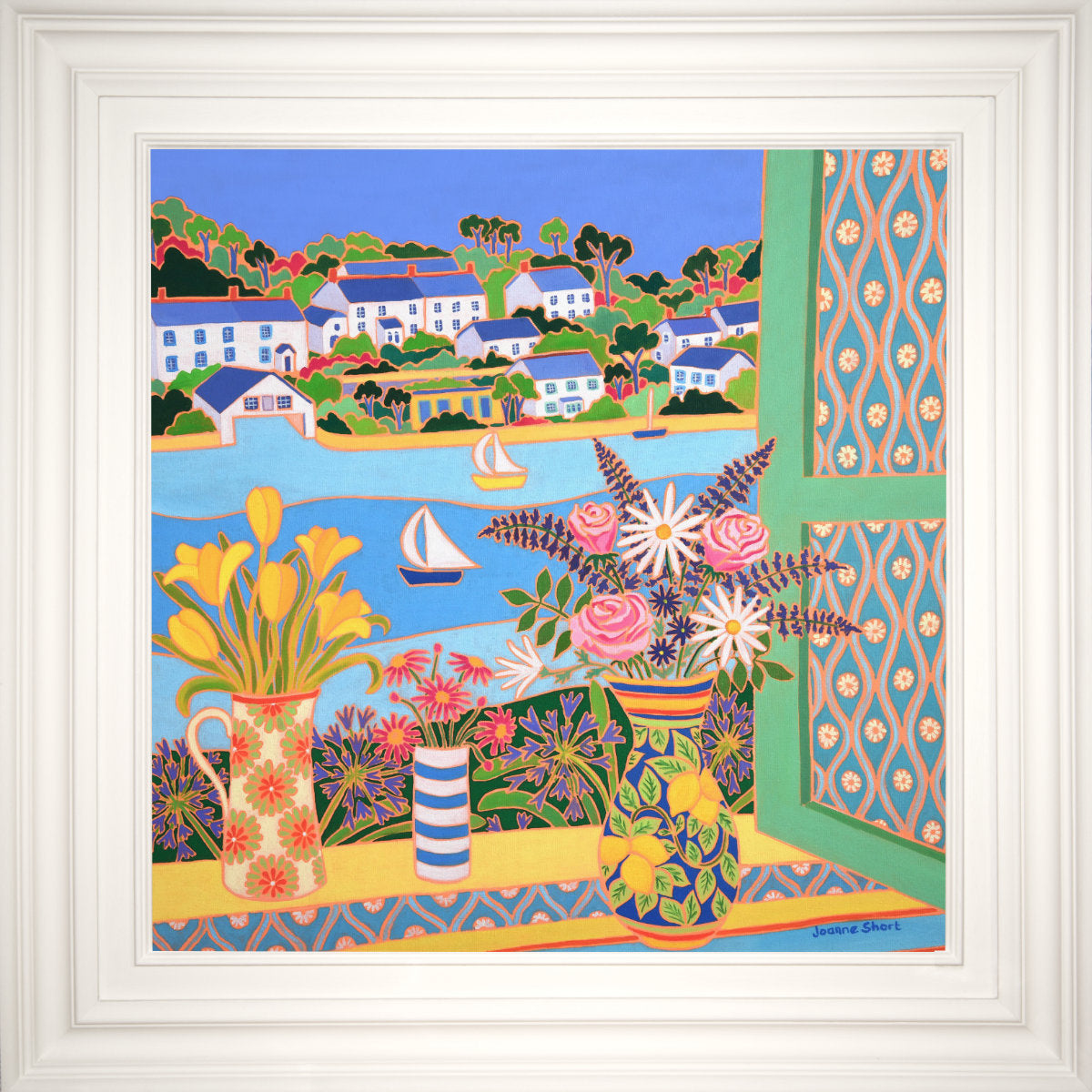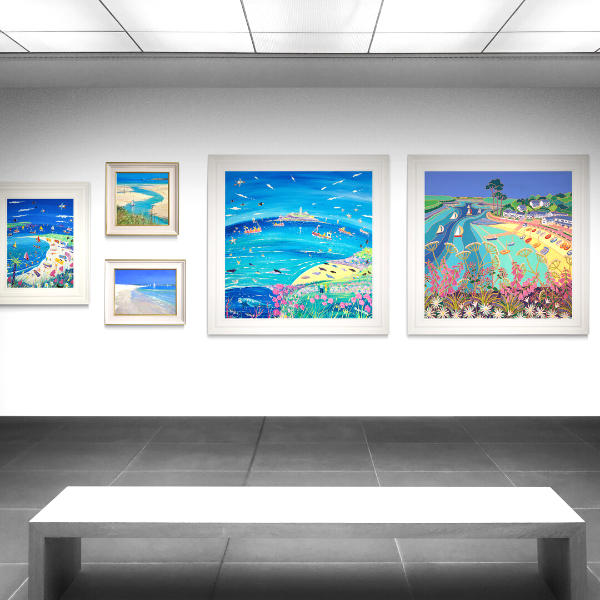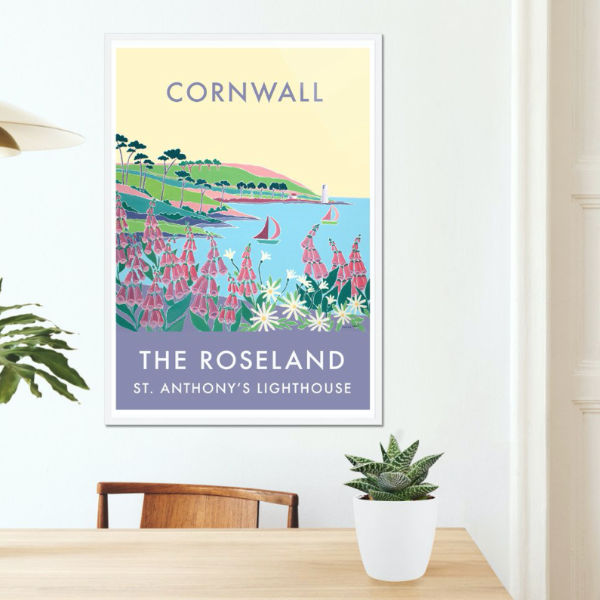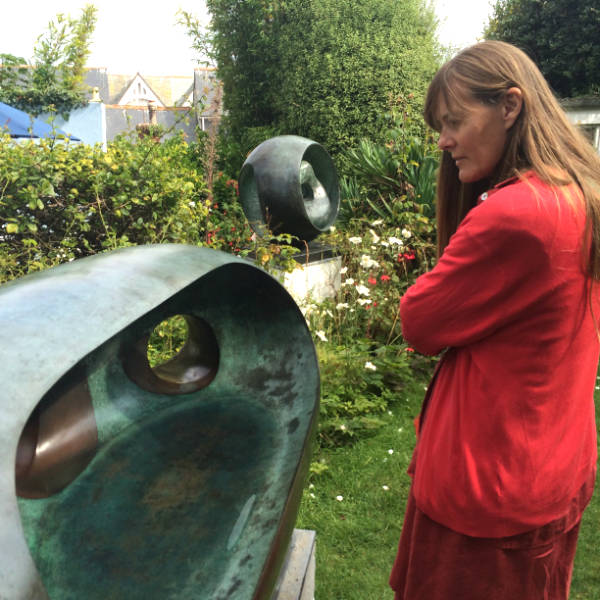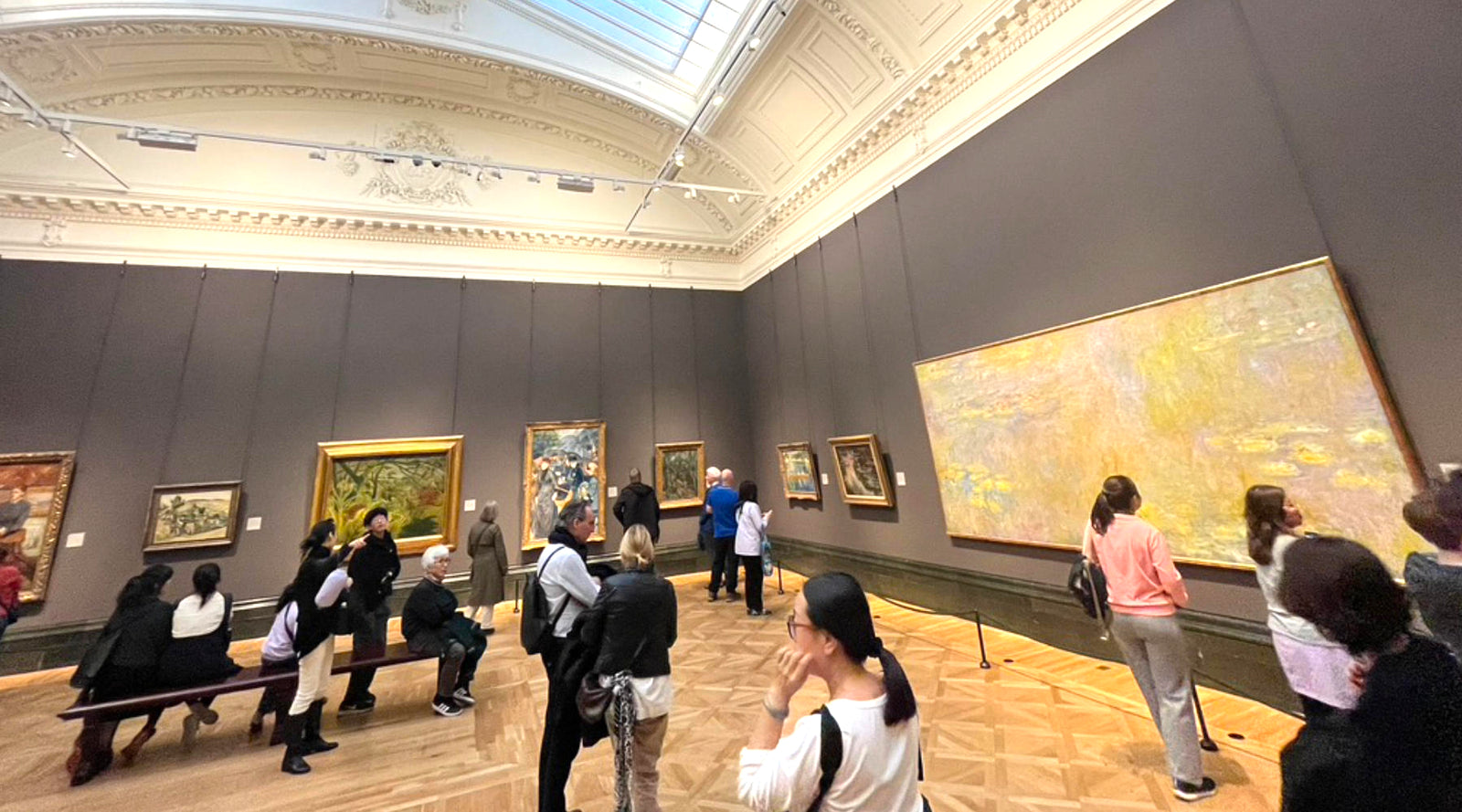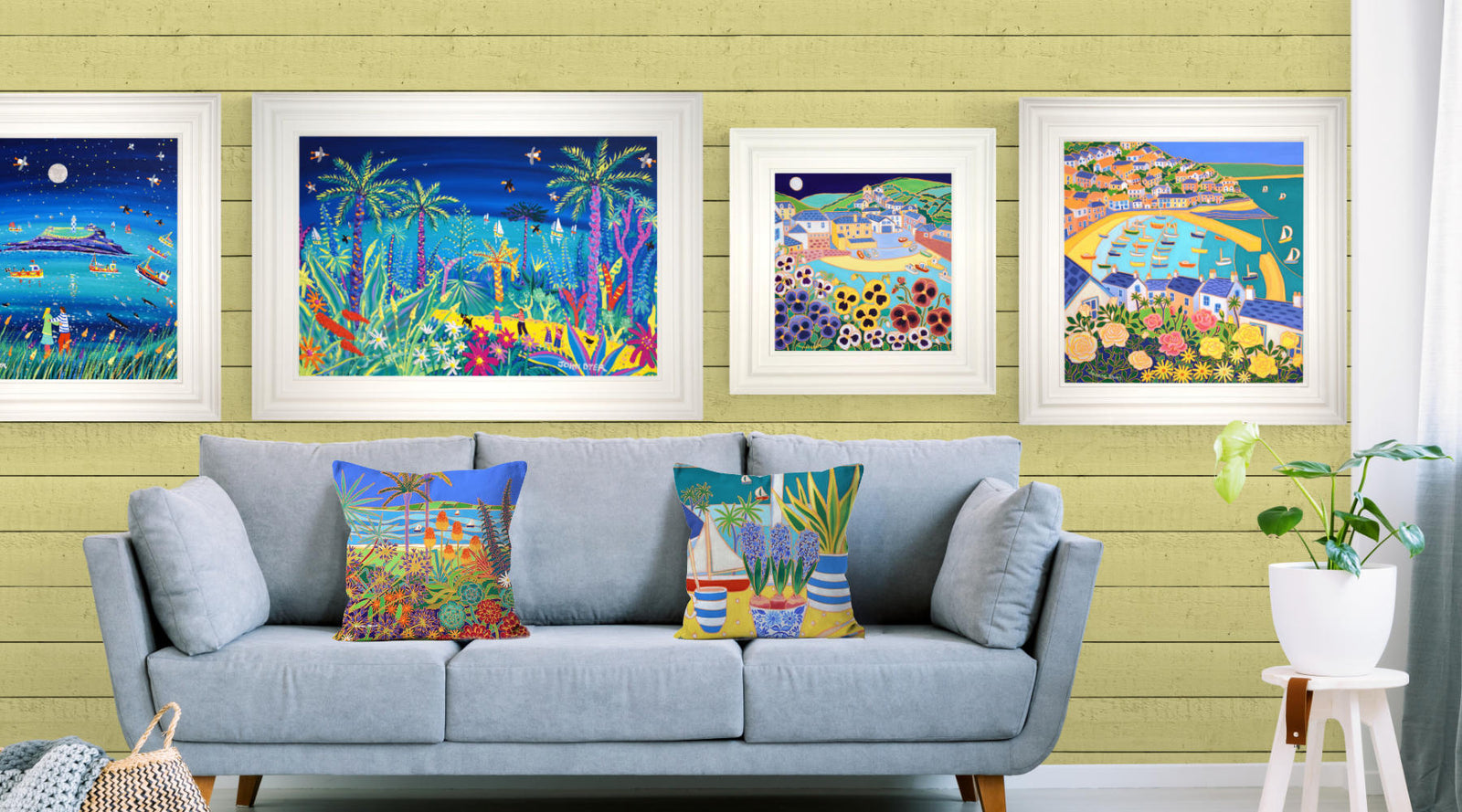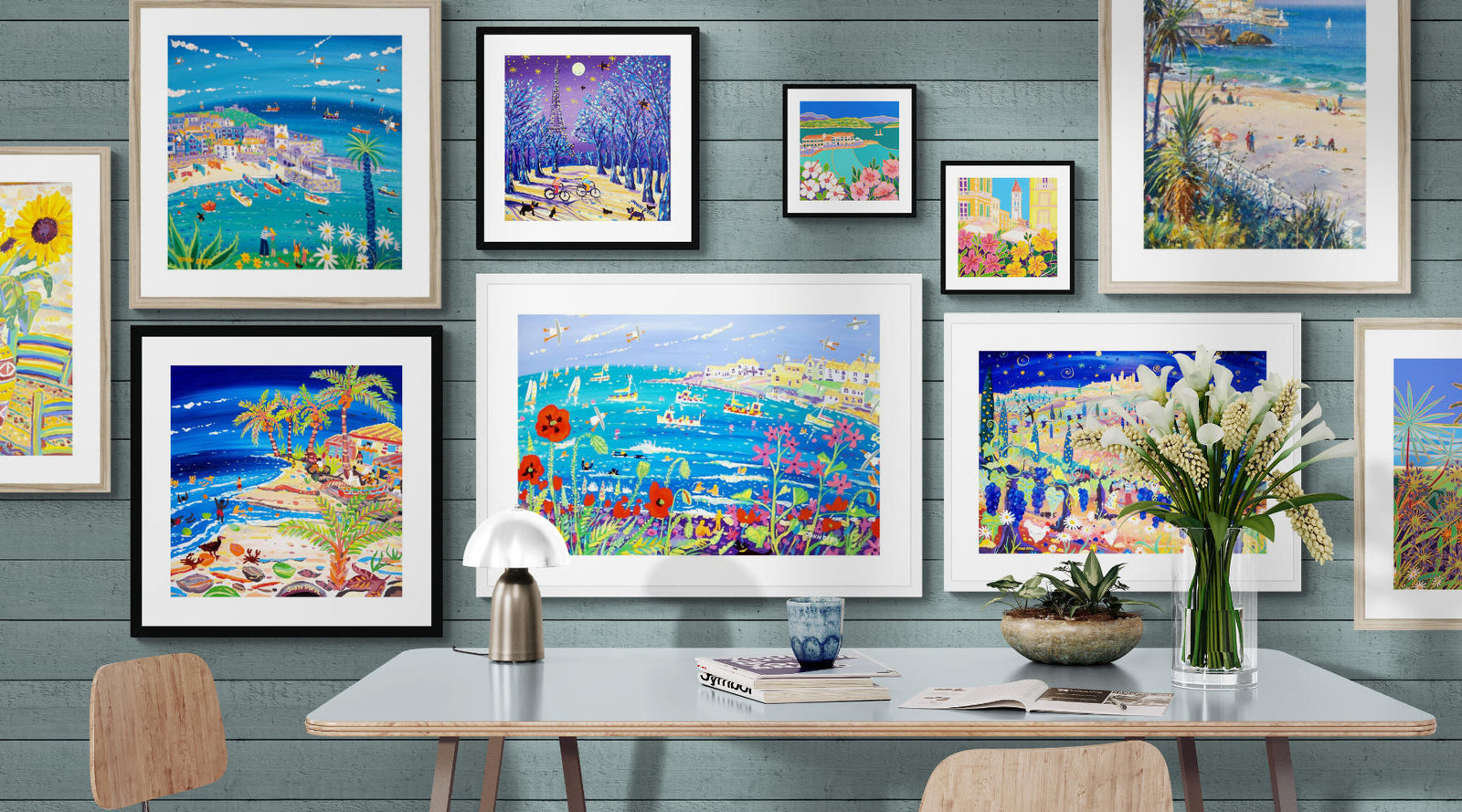
Are you wanting to create a gallery wall artwork in your home? This guide will help you understand what it is and how to design one for your own wall. Learn how to select and arrange pieces for the best visual impact.
Buy Gallery Wall Artwork Online
Key Takeaways
-
Transform your living space with vibrant and personalised gallery wall artwork that reflects your unique style and preferences.
-
Experiment with different layouts, frames, and sizes to create a visually appealing and cohesive gallery wall that enhances your home’s decor.
-
Use templates and precise measurements to hang your artwork effectively, ensuring a polished and inviting atmosphere in your space.
Understanding Gallery Wall Artwork
A gallery wall-style hanging is traditionally known as salon hanging. Gallery walls are a great way to display your favourite artworks and add colour and interest to a blank wall. This style of hanging means taking into account the whole wall space and arranging groups of different sizes and orientation of images, creating an artwork in its own right.
Above: Art gallery style wall of nautical prints from the John Dyer Gallery
Gallery wall artwork can bring colour and character to your home decor, transforming dull rooms into vibrant spaces. Incorporating gallery wall art significantly enhances the colour and vibrancy of a room, breaking up the monotony of plain walls and adding texture and depth.
Art for gallery walls can be made up of a selection of images, including paintings, prints, canvas prints, and poster prints, providing a diverse array of options to suit any style or preference. Whether you prefer traditional paintings or modern prints, a well-curated gallery wall can become the focal point of your home.
The History Behind Salon Hanging
The words “salon wall” refer to the style of decoration in the spirit of “more is more.” Salon walls, more recently named ‘Gallery walls’ have taken the design world by storm and have started to become a fashionable way to decorate areas of one’s living space.

“Salon style” hanging refers to a method of displaying paintings in galleries from floor to ceiling. This originated in the 1670s at the Académie royale de peinture et de sculpture, in Paris where works of art were displayed in events open to artists and scholars to view and discuss the paintings. These were prestigious events for artists and became meeting points for discussion and study of art. Complaints would often be made by artists who came to study the artwork, about not being able to see the high works properly. This style of exhibition became popular throughout Europe and, later, in North America. .

Above: The home of Henri Matisse with his work hung in a salon style
In the early 20th century this style of Salon hanging moved into the homes and studios of artists, especially those practicing the art of cubism, including Picasso and Henri Matisse.

Above: Example of Modern Style Hanging, Penlee House, Fred Yates Exhibition
Later,
Interestingly MoMA (Museum of Modern Art) in New York recently hung a cubism exhibition in this original salon style to demonstrate how these works would have originally been hung.
Finding Your Gallery Wall Style
Creating your own gallery wall is an opportunity for personal expression. There is no right or wrong way to design it, making it a truly personalized decor element. Finding a style that matches your vision for your living space helps create an environment you love. Themes such as travel, family, or nature can provide inspiration. For instance, if you love the New Scandinavian Design, vintage, or abstract styles, these can be reflected in your gallery wall.
Gallery walls can feature a mix of artwork styles and formats, encouraging a dynamic and personalised decor. Posters and frames in various sizes can enhance the variety within your gallery wall. Consider utilizing styles like geometric minimalism or vibrant nature prints to contribute to the visual appeal.

Above: A salon hung wall at The Tate Britain
From curated prints to sets of 2 or 3, the available formats for gallery walls are plentiful. Discover the combinations that best express your style and complement your home interior. This process is all about experimentation and finding what makes your heart sing. Choosing a theme that runs across the display can be a way of presenting the work
Essential Tips for Creating a Gallery Wall
Templates can be a lifesaver, helping you visualize and plan layouts for different room sizes. These structured layouts assist homeowners in creating cohesive displays tailored to their space. Maintaining a distance of 3 to 6 inches between each piece of artwork is recommended for a cohesive look in small gallery walls.In small spaces, aim for the centre of each piece to be approximately 57 inches from the ground for optimal eye level. Experimenting with the layout on the floor or using kraft paper templates can help visualize how different sizes and shapes work together before installation.
Compact gallery walls benefit from a spacing of about 3 inches between artworks to prevent overcrowding. These tips can make a significant difference in ensuring your gallery wall looks polished and well-thought-out.
Choosing the Right Frames and Materials
The frames you choose can significantly impact the overall aesthetic of your gallery wall. In medium spaces, using frames of varying styles and colours can enhance the overall aesthetic and avoid monotony. Uniform frames can promote a cohesive look when mixing various art styles and colours.
Art pieces within a specific colour palette create a cohesive and visually appealing display. Thoughtfully selecting frames and materials elevates the quality and appearance of your gallery wall.
Gallery Wall Templates for Every Space

Above: Examples of Gallery Wall Templates
Gallery wall templates can be helpful for creating inspiring displays that suit various room and interior design styles. Adapting the size and style of the gallery wall based on its room location ensures the best visual impact.
Templates are available online to guide you, whether you have a small hallway or a spacious living room.
Curating Your Gallery Wall Art Collection
Above: An art gallery style wall with prints and paintings from The John Dyer Gallery
The choice of art for gallery walls should reflect personal taste while complementing the room’s existing decor. Perhaps begin your gallery wall with a piece that holds personal significance, such as an heirloom or a meaningful artwork or a favourite city like London. This provides a strong foundation for your collection.
Aligning frames with nearby furniture creates visual balance and enhances the overall appearance. Mix larger pieces with smaller ones for harmony. Larger anchor pieces can set the overall tone for your gallery wall collection.
Combining black and white artwork with colourful pieces offers balance and contrast. Selecting items that share coordinating colours across different pieces can help unify the design. Start by collecting a variety of art pieces that complement each other in style and colour without being overly coordinated. This approach ensures a cohesive yet dynamic gallery wall.
Incorporating Different Sizes and Shapes
Different sizes of artwork add visual interest and depth to a gallery wall. Incorporating various frame sizes, shapes, and colours enhances the overall look. Textured materials like fabric, textiles, or metal add visual interest and depth.
Combine different shapes and styles, mixing organic and geometric forms for visual balance. Mixing artwork orientations—landscape and portrait—contributes to a dynamic layout, making the gallery wall more engaging. Including frames of unique shapes, like circular or unconventional designs, adds an element of surprise and creativity.
Hanging Your Gallery Wall with Precision
Before making holes, lay out your gallery wall by tracing the art on kraft paper and marking where the hangers will be. Starting with the largest piece of art at a corner position helps anchor the gallery wall design in larger rooms.
Hang the largest piece of art at eye level, generally around 57 inches from the floor to its center, adjusting based on room proportions. Hang larger pieces at eye level, while smaller works can be arranged in clusters or lower on the wall.
Maintain uniform spacing of 3 to 6 inches between art pieces for a cohesive look.
Inspiration from John Dyer Gallery
The John Dyer Gallery showcases notable artists such as John Dyer, Ted Dyer, and Joanne Short, contributing unique pieces to the collection. The gallery frequently updates its collection, providing a fresh array of original paintings for art enthusiasts.
Explore the John Dyer Gallery’s online collections for inspiration, featuring an impressive selection of prints and posters. These pieces can spark your imagination and help you create a stylish and personalized gallery wall in your own home.
Benefits of Adding Gallery Wall Artwork to Your Home
Above: A collection of framed museum-quality open-edition fine art prints in a gallery wall artwork display. Buy prints online.
Wall art significantly contributes to home decor by enhancing spaces with character and visual appeal. Strategically hanging art can improve a room’s ambiance and create focal points, enhancing overall decor. Artwork helps create a polished and finished look, making spaces feel more inviting.
Gallery wall art can evoke memories and emotions, linking you to special moments from the past. Colorful contemporary art prints can transform your home and positively impact mental health and wellbeing.
Summary
Creating a gallery wall is a rewarding and fun project that transforms your home into a personal sanctuary filled with meaningful art. By understanding the principles of layout, selecting the right frames, and curating your collection, you can create a stunning display that reflects your unique style. Let your walls tell your story.
Frequently Asked Questions
How do I start creating my own gallery wall?
Select art pieces that resonate with you and match your room's decor to create a gallery wall that reflects your unique style. This personal touch will make your space feel truly yours!
What spacing should I maintain between frames?
For a cohesive look, maintain a spacing of 3 to 6 inches between your frames. This will enhance the overall presentation and create an inviting display!
How do I ensure my gallery wall looks balanced?
To ensure your gallery wall looks balanced, mix larger pieces with smaller ones and include anchor pieces to set the overall tone. This approach creates visual harmony and makes your display eye-catching!
What are some inspirational sources for gallery wall art?
For an inspiring gallery wall, check out the John Dyer Gallery’s online collections, which offer an array of prints and posters to spark your creativity! Transform your space with art that truly resonates with you.
How can I visualize my gallery wall layout before hanging?
Visualizing your gallery wall layout is easy and fun—just create templates from kraft paper or arrange your pieces on the floor to find the perfect combination. This way, you can confidently hang your artwork, ensuring a stunning display!


